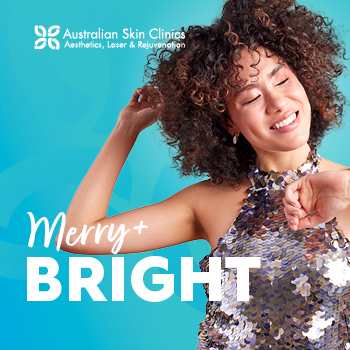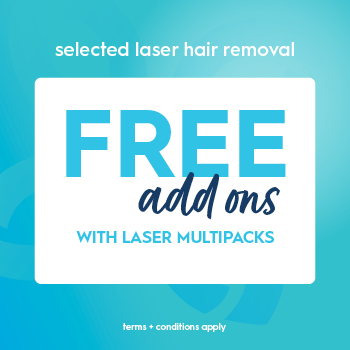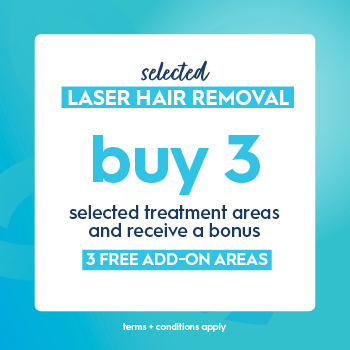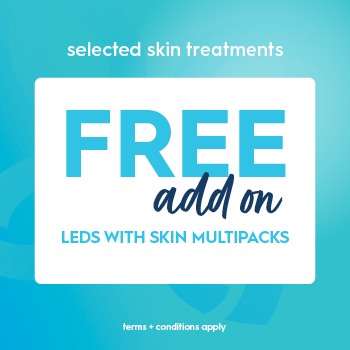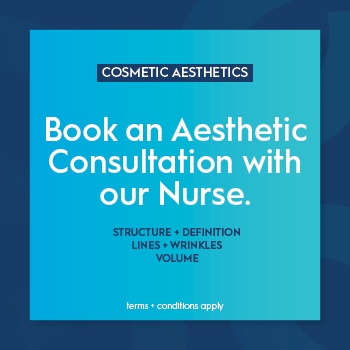Skin Treatments
Skin Treatments
- Observ Skin Analysis
- O2 Oxygen Mask
- Cosmelan
- Dermaplaning
- Fractional RF
- Hydrafacial™
- Fraxel Laser
- Laser for Pigmentation
- Laser for Redness
- Laser Skin Rejuvenation
- Laser for Veins
- Laser Tattoo Removal (Woodgrove Only)
- LED Light Therapy
- Lumixa
- MediFacials
- MediPeels
- MesoInfus™ Needling
- Microdermabrasion
- Microneedling
- Pico Skin (Woodgrove Only)
- Skin Programs
- Sylfirm X Advanced RF Needling
- Thermage
- Free Consultation
- Pricing + Promos
Frequently Asked Questions
Laser hair removal has fast become one of the most effective options for permanent hair reduction. No laser clinic can claim 100% hair removal, as some hair will always strive to grow back. Re-growth can be affected by hormones and other biological factors which can vary from person to person.
After a session of laser hair removal, the hair will fall out gradually over the period of one month.
The timing of your treatments dramatically influences the outcome due to hair growth patterns, so we always suggest you book a course of laser hair removal treatments rather than sporadic appointments. Treatments should be every 4-6 weeks or as advised by your laser technician. As you progress through your treatment plan, time between treatments may increase as hair re-growth reduces.
Yes, a large percentage of our clientele are male and the most common areas treated are back, chest and arms. You can find our latest Laser Hair Removal promotions here.
Laser hair removal does not make hair grow back thicker. If regrowth does occur after the full amount of recommended treatment sessions, the hair is usually much finer than the original growth and can be maintained with one treatment every six months.
Laser hair removal for full body can take anywhere between 90 minutes to 120 minutes depending on the size of the treatment areas and the thickness of the hair. Your Australian Skin Clinics laser technician will be able to provide a more accurate session time during your consultation.
Laser can decrease the chance of experiencing ingrown hairs. When there is no hair in the follicle, there is less chance of an ingrown hair occurring.
No, if performed correctly laser hair removal will not make the skin darker. However, in some cases where incorrect machines or settings are used, the skin can produce pigment as a defence mechanism against the heat. At Australian Skin Clinics, we take great care in selecting the right machine and using correct aftercare to ensure safe and effective treatment for all skin types.
No, laser hair removal does not make you sweat more.
Breakouts due to hair removal treatments such as waxing, plucking and threading, are generally attributed to the irritation caused in the process of pulling the hair from the skin. Laser hair removal does not pull the hair from the skin, but rather is less invasive and uses light to target the hair follicle, to prevent further growth and eventually have the hair fall out. As a result, laser hair removal may result in a decrease in breakouts.
If you have fine hairs on your face, you may find that you still get a breakout even with laser hair removal. If this occurs, speak to your treating technician for aftercare recommendations.
Laser hair removal achieves the best results for people with fairer skin and darker hair, however our laser technology and laser preparation products allow us to treat a variety of skin and hair types. Laser hair removal is not suited to individuals with blonde, red, grey or white hair. Your technician will be able to assess your hair during a free consultation.
Laser hair removal is not recommended for pregnant mums.
The laser specifically targets the pigment within the hair follicle. This is why it is important not to affect the skin’s pigmentation before or after your laser treatments. Sun exposure can increase the risk of adverse reaction including burning, blistering and post inflammatory hyper or hypo pigmentation in some cases these reactions can be permanent and prevent you from achieving your ideal results.
Please avoid sun exposure or solariums 2 – 4 weeks prior to your first treatment and continue to avoid exposure to the treatment area throughout your entire treatment plan. Be sure to also apply sunscreen hourly if you are exposed to direct sunlight.
It is also recommended not to use any form of fake tanning products prior to your treatment, this includes fake tan sprays or lotions and bronzing powders or creams. As these products alter your natural skin colour, they must be completely removed from the treatment area prior to your appointment, otherwise your technician may advise you to postpone your treatment.
Laser hair removal will not make you infertile, as the laser does not penetrate deep enough to reach the reproductive organs.
Within a month of your first treatment, your laser hair removal treatment will begin to work. After each treatment, the hair becomes lighter or thinner and once you complete your treatment plan of 6-12 sessions, you should expect long-term hair reduction.
Laser hair removal is a fast and effective treatment, depending on your area of treatment you can be in and out in as little as 15 minutes.
Electrolysis involves inserting a fine probe that uses shortwave radio frequencies to target the hair follicle and is thought to be more painful than laser hair removal.
Most clients would agree that laser hair removal does not hurt as much as using an epilator, as epilators physically pull the hair from the skin. Of course, this will depend on your individual pain tolerance and the area of the body being treated.
While some women may feel a little more sensitive, laser hair removal does not typically hurt more before or during your period. You may wish to schedule your treatments after your period just to ensure a more comfortable session.
Yes, laser hair removal can hurt or damage your eyes if the proper protective eyewear is not worn. At Australian Skin Clinics, all clients must wear full block-out goggles to protect their eyes from the laser, and our technicians also wear approved safety glasses.
It is not recommended to receive laser hair removal while pregnant, as the risks are uncertain. At Australian Skin Clinics, we are unable to treat you if you are pregnant or breastfeeding, due to the lack of information available about the effect on the fetus. The fluctuation in hormones during this time can also minimise the effectiveness of your treatment and compromise your results.
While some patients feel no pain during laser, others may experience a mild discomfort. Some describe laser hair removal as feeling like a light rubber band snapping against the skin. At any time during the treatment, you can advise your practitioner if you are experiencing discomfort and they will adjust the laser accordingly to provide relief.
An active skin care product, such as Balense Recovery Cream, and cold compresses will ease any discomfort or swelling post-treatment. If you experience any pain long after a laser hair removal treatment, we recommend contacting your treating clinic immediately.
Laser hair removal should not be so uncomfortable that the client requires numbing cream. At Australian Skin Clinics, we use other methods to ensure the client is comfortable throughout the treatment by adjusting the laser settings and controlled cooling.
No, laser hair removal does not have to hurt to be effective. The treatment works by laser energy being absorbed by the pigment in the hair and destroying the follicle, any discomfort experienced during this process will depend on the individual and the area being treated.
Some clients experience more discomfort in sensitive areas where the skin is thinner, or where the hair is thicker or darker. Sensitive areas may include the Brazilian, underarms, upper lip and around the ankles.
Laser hair removal should not hurt your teeth or gums, as the laser does not penetrate deep enough to reach these areas. If you continue to have pain or sensitivity in your teeth or gums after laser hair removal, we recommend visiting your dentist as these sensations could be caused by an underlying dental condition.
The laser technology used in laser hair removal can hurt or damage your tattoos. The reason for this is because the laser is attracted to the dark pigment of the ink and can cause the ink to scatter. At Australian Skin Clinics, we follow a strict protocol to ensure the laser does not go anywhere near the tattooed area.
Most clients would agree that laser hair removal does not hurt as much as waxing, as waxing physically pulls the hair from the skin. Of course, this will depend on your individual pain tolerance and the area of the body being treated.
Clients with hormonal imbalances or Polycystic Ovarian Syndrome (PCOS) are recommended to consult an Endocrinologist for evaluation and possible medical treatment. These clients tend to have excess hair growth secondary to their medical condition and may find that they require both medical treatment as well as ongoing laser treatment, in order to achieve optimum results.
Skin Treatment Frequently Asked Questions
A microdermabrasion is a non-invasive skin treatment that exfoliates and removes the dead, dull, outermost layer of skin. Often referred to as a micro or microderm, this gentle and invigorating treatment leaves your skin clean, clear, bright and purified.
Microdermabrasions are different from a regular facial, as they use active skin care products and advanced technology to exfoliate the dull, dead, outer surface of the skin, leaving it clear, bright and purified. Most notably, microdermabrasion treatments feature the use of diamond-tipped machines and vacuum suction to extract debris from your pores and collect dead skin cells.
Australian Skin clinics offer a selection of time options and treatment types to suit your lifestyle. Treatments can range from a 20-minute express treatment to a 50-minute High-Performance Microderm, depending on how intensive you want your treatment experience to be. As a walk in, walk out treatment, you can even enjoy microdermabrasion during your lunch break!
Microdermabrasions are a non-invasive treatment that targets the outermost layers of the skin. The diamond-tipped suction machine feels like tiny sand-like particles running across your face; a strange sensation for first timers but by no means painful.
A minimum series of three treatments is recommended for best results. For acne sufferers, regular fortnightly or monthly treatments can give you long-term control over your skin and breakouts.
Total treatment time is 30 minutes, depending on the size of the area and there is little to no downtime. Slight redness and warmth to the skin may be experienced after your session, and dryness can be experienced a few days post-treatment.
The pricing for micro-needling will vary depending on the area being treated. See our price list for full micro-needling pricing.
Both treatments address concerns of loose crepey skin, scars, fine lines and wrinkles, stretch marks, acne scars, open pores. However, if you are looking for a more targeted treatment, Fractional RF is best for overall appearance and general redness while Nanopore micro-needling is best for darker skin tones and pigmentation or sun damage. As always we strongly recommend that you take advantage of our free consultations so that our technicians can help you select the best treatment suited to your wants and needs.
Only the Nanopore micro-needling device can treat the eye contour. Unlike other types of micro-needling devices, Nanopore is one of the first treatments of its kind that can target the more sensitive areas around the eye thanks to its adjustable needle depth and increased oscillation (speed). The result for the eye contour is a reduction in fine lines and wrinkles, along with a healthier, tighter-looking appearance.
Relatively short, depending on your individual treatment plan. Typical treatments are fast and effective, lasting between 10 and 20 minutes.
There isn’t any downtime from the standalone LED treatment. However, if LED Light therapy is an adjunctive treatment, there may be associated downtime to your other procedure. Your technician will discuss this with you during your consultation.
The number of treatments required will depend on your individual goals, which will be discussed during your initial consultation. Typically, clients are treated two times per week over a period of time and many clients see and feel results after just one treatment.
Yes, LED Light Therapy was initially developed to aid in the recovery of wounds and post-surgery scars, without the harmful use of radiation. Now, you can undergo LED Light Therapy to assist with pain relief, superficial skin lesions, rosacea, burns or simply as an addition to your advanced skin care regimen.
Currently as there is insufficient clinical data relating to the side effects of receiving this treatment whilst pregnant, breastfeeding or having IVF treatment. Australian Skin Clinics has made a duty of care decision to not perform LED Light Therapy in these instances.
We do not treat varicose veins at Australian Skin Clinics.
Yes, Australian Skin Clinics will treat spider veins with laser from the waist upwards as the veins are near the surface of the skin.
Recovery will vary for each individual, however, the standard is no required downtime, with clients being able to resume normal daily activities. It is advised that routine exercise does not resume for a week. Minor bruising and tenderness is common and sometimes there may be a slight swelling of the treated area, this will subside within a few days.
Laser for facial veins at Australian Skin Clinics costs $199 per treatment.
Cosmetic Injectables Frequently Asked Questions
At Australian Skin Clinics we offer a wide range of cosmetic injectable treatments to help rejuvenate your appearance. You can view our Cosmetic Injectables range here.
All injectable treatments are performed by our experienced team of medical doctors and registered nurses so you can trust you’re in safe hands. Enhance your natural features and reach your aesthetic goals with a tailored treatment plan.
Duration depends on many factors, such as the individual’s skin type, skin condition, lifestyle and age – as well as the type and amount of product used. After the initial treatment, follow-up sessions are normally recommended around every 6 to 12 months depending on the individual and the product used. A treatment of the lips can last up to six months.
Dermal fillers can be used to smooth away facial lines and wrinkles, create fuller lips and shape facial contours, such as cheeks and chin, and revitalise the skin. The most common areas treated are nose to mouth lines (the nasolabial folds), lips (adding volume and shape), cheeks.
Due to TGA guidelines, we are unable to advertise the brand names of prescription medicines such as dermal filler. We do however stock the leading brands of all fillers and when you have your consultation we can freely talk about the options available.
The injections themselves feel like a slight pinch, and you may experience slight pressure or a ‘stinging’ sensation as the product is being injected. Depending on your personal pain tolerance and on the area, your practitioner may apply or inject a local anaesthetic to the to-be treated area.
Body Sculpting Frequently Asked Questions
At Australian Skin Clinics, we offer CoolSculpting® and Chin Sculpting treatments to support your body sculpting goals.
Please note: CoolSculpting® is only available at select Australian Skin Clinic locations.
Coolsculpting® is a fat freezing, body sculpting technology that delivers safe, effective and permanent results in reducing stubborn fat pockets. The procedure has been performed over 11 million times worldwide. This seriously cool, non-invasive process makes CoolSculpting® a safer and quicker alternative to liposuction and treatments have little to no downtime.
CoolSculpting® uses cryolipolysis a process developed by Harvard scientists to freeze fat cells underneath the skin to permanently eliminate them without affecting the surrounding tissues. During treatment, the CoolSculpting® applicator will use controlled cooling to lower the temperature of the fat cells to the precise point at which they become damaged. Your body then naturally metabolises the damaged fat cells and removes them for good.
As the cooling begins during the first few minutes you typically feel intense cold. This should soon become bearable as the treated area numbs. With some applicators, you’ll feel some pulling as suction is applied.
After the treatment, you may feel some tingling. The area is then massaged to assist in breaking up the frozen fat cells to get them ready for elimination byu the body’s lymphatic system. Clients are usually able to return to normal activities following their appointment.
Most of our CoolSculpting® treatments require a minimum of two (2) cycles, which are performed on the same day. As the treatment is customised to your desired goals, further cycles may be required to achieve optimal results. Our trained CoolSculpting® technicians will discuss with you how many cycles will be needed to meet your personal outcomes.
Please note: The CoolSculpting® procedure is not a treatment for obesity or weight-loss. As with any medical procedure, ask your registered medical practitioner if the CoolSculpting® procedure is right for you.
Chin Sculpting uses fat-dissolving cosmetic injections to target the fat under your chin. The fat dissolving formula breaks down and metabolises the targeted fat cells allowing the body to naturally eliminate them for permanent, sculpted results.
Chin sculpting uses fat-dissolving injections to reduce the fat under the chin, while jaw sculpting is focused on slimming the face. Jaw sculpting treatments use anti-wrinkle injections to target the masseter muscles (the two “chewing” muscles on your jaw, below your ears).
Liposuction removes fat surgically, whereas chin sculpting treatments are conducted with an injection into the area that dissolves fat. Due to the surgical nature of liposuction, more patient downtime is required for recovery.

